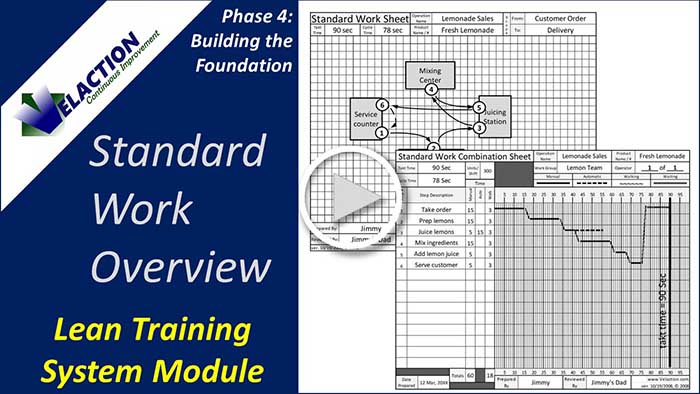> Continuous Improvement Strategies
You keep running into problems while trying to time for Standard Work
![]()
Process documentation is important for two reasons. The obvious one is to create work instructions that record the details of how a process should be completed. The other big reason is to create a standard sequence of operations (i.e. when the process steps should be done) to provide more consistency in the time a process takes. This helps leaders accurately assess the staffing needs of an organization. It also provides an indicator of when a team member is falling behind on a process.
Obviously, to serve these last two needs, the timing of the work must be accurate. Sometimes, though, a process has substantial variation, and it is a challenge to time it without something unusual happening at one or more of the steps. With a long process that has many steps, this effect is even more pronounced. It is important to be clear to your team about how to address this variation when documenting a process.
Note: Variation and Standard Work have a “chicken or the egg” type of relationship. You want to knock out the variation before trying to set up your Standard Work, but Standard Work is among the best ways to get rid of variation. In practice, most people try to eliminate the low hanging fruit, and then establish a standard. Continuous improvement is then applied to keep making the Standard Work better.
![]()
Problem
You keep running into problems while trying to time for Standard Work.
How this affects you
You can’t seem to get a “clean” time. After several cycles, only a couple of trials did not have a problem that delayed the process.
Action to Take
Don’t dismiss problems when taking times to establish Standard Work. Make a note of the issue and let the stopwatch keep running. Trying to subtract out “problem time” on the fly is too hard—the results just don’t end up being accurate. Plus, if you write down the problem, you know what needs to get fixed to make Standard Work flow smoothly.
Setting a standard is difficult when there is a lot of variation. The best method is to start by resolving any problems that cause unpredictability in the process. The less variation you have when you start documenting, the smoother your task will go.
Unfortunately, eliminating these issues is one of those easier-said-than-done tasks. After all, if the fixes were quick and simple, wouldn’t they have already been done?
Instead, your boss will need to make a choice. He will have to decide how to handle the problems. Lean experts each seem to have their own way of managing problems and variations. If nothing else, this should tell you that your boss will be selecting from several less-than-perfect options. The most common options include the following:
Ignore the problems.
This means that the problem is not recorded on the Standard Work Sheet, even though it occurred during the timing. The logic here is that the issue is an aberration that would not take place during a “normal” run.
Lean purists tend to push for this option. They would say that the problem should be worked on and removed, rather than enabled by including it in Standard Work.
Problems that make it to the Standard Work Sheet are only visible to the operator doing the work. When a problem is treated as an exception, it becomes visible to leaders and engineers as well, which usually makes it get fixed quicker.
If you don’t document the issue on the Standard Work Sheet though, workers will exceed the takt time whenever the problem comes up. In that case, your boss must choose from two imperfect options:
- Take the hit and let production stop whenever the issue occurs. (Bad idea!)
- Develop a reaction plan that involves someone being available to help when problems come up. This might be an on-call engineer or a floater assigned to the area.
The second choice is better than the first option, but still is not great. It is wasteful because it throws resources at the problem, rather than eliminating the root cause.
Add in a little time.
Sometimes, your manager will try to average out the times and add a little buffer. What this really means is that if the work is done without a hitch, employees will be standing around for only a short time.
When a problem arises, though, the buffer is not enough to cover the whole time it takes to resolve it. You end up with either too much spare time, or not enough. This method is used, though, because it has less production stoppage than the previous option, and less waiting time than the next one.
Add in enough time to address issues.
This option adds in a large time buffer—enough to handle the majority of problems.
Some Lean leaders do this because it adds stability to the whole value stream. If one process constantly disrupts flow, it costs much less to throw a few labor hours at the problem than to let one problem continually stop a production line.
These options are really just different methods of paying for a problem. Each one manages the costs of the problem in a little different fashion.
The real trick, regardless of which option your boss chooses, is to have a plan to permanently resolve issues. This is at the heart of Standard Work. Reduce variation, and then lock in the process. How can you standardize something that is different every time?
This means consistently tracking the issues and spending the time to collect data. If problems never make it onto a project list, they will never get fixed.
Why this works
The Why this Works section is only available in print copies of Whaddaya Mean I Gotta Be Lean?

0 Comments